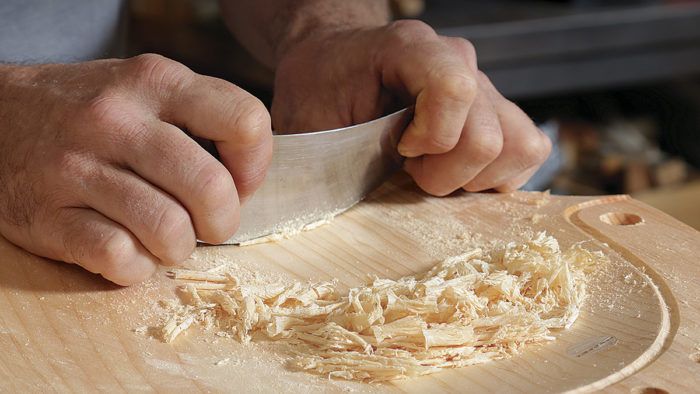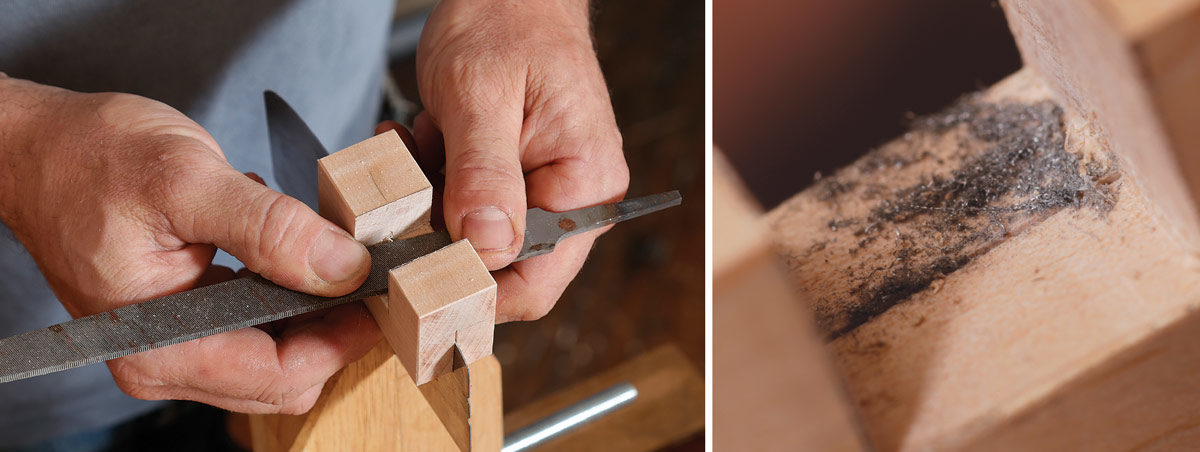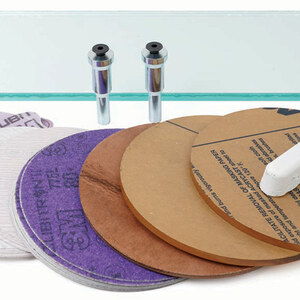How to Sharpen and Use a Curved Scraper
Peter Galbert uses a curved card scraper as a shaping tool to fair curves and dial in complex shapes on chair seats.
Synopsis: Peter Galbert uses a curved card scraper as a shaping tool to fair curves and dial in complex shapes on chair seats. With the aid of a simple honing jig, he’s able to sharpen a curved scraper quickly and reliably. Here, he shows how to make the jig, how to use it to create a sharp edge, and how to use the scraper once you have reached sharpening perfection.
The card scraper is an indispensable tool in my shop. I was introduced to it as a tool for refining flat surfaces, but I now use it more as a shaping tool to fair curves and dial in complex shapes on chair seats. The soft metal is easy to grind to a curve, and with a simple shopmade honing jig I can maintain a high level of sharpness across the curved edge with speed and repeatability.
The cutting edge of any scraper, straight or curved, is a slightly deformed 90° meeting of the flat face of the tool and the edge. While much is said about “turning the burr,” the real attention should be paid to establishing a perfect right-angle relationship between the face and the edge. If these surfaces meet at a sharp 90° angle, the scraper will take a good shaving even without a burr. Adding a burr improves the cutting action from good to beautiful. But if there is any rounding of the underlying edge, there will be little hope for success, regardless of your efforts with the burnisher.
EXTRA: Watch a video of Peter Galbert’s sharpening process.
Another important factor, besides having a sharp corner where the surfaces meet, is the condition of the surfaces. When you joint the edge with a file, you’ll attain the correct geometry, but the edge will have grooves left by the file. This might be acceptable for rough work, but the scraped surface will have lots of small scratches. Refining the edge with a diamond hone will yield a smoother surface and a cleaner cut.
Making a curved scraper is simple
Draw a curve on the flat face of a scraper and grind to it. Take care not to let the heat build to the point where the edge blues. Overheating will soften the metal and reduce the life of the edge. After grinding, polish the flat faces on a freshly flattened stone or with fine sandpaper on glass. Then it’s on to filing.

Once you’ve made the honing jig , put a sharp fine file in the notch and pinch the file against the bottom of the notch. Skew the file so it cuts on the diagonal. Insert the scraper in the slot and draw the jig toward you using very light pressure. If the edge has been burnished previously, the metal will be compressed and hard, and it may take a few strokes to reach the softer metal beneath. Small curly shavings will peel off the edge when you are through the tough stuff.
For the full article, download the PDF below.
More on FineWoodworking.com:
- Utility-knife blade makes a nimble scraper – #259–Jan/Feb 2017 Issue
- The Scraper Plane: Boat anchor or bench hero? by Roland Johnson
- Bob Van Dyke Shop Tip: Using a Card Scraper – Smart techniques for using this essential smoothing tool
Fine Woodworking Recommended Products

Veritas Precision Square

Lie-Nielsen No. 102 Low Angle Block Plane

Olfa Knife






















Comments
Excellent Video. I will be putting this to use immediately!
Log in or create an account to post a comment.
Sign up Log in